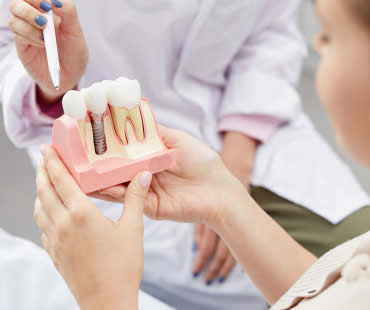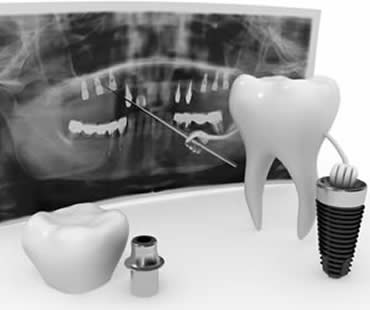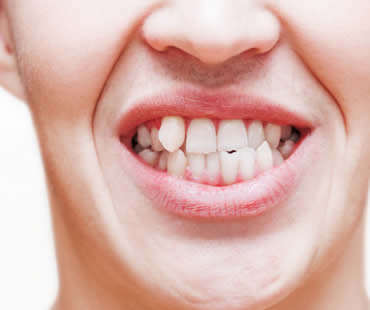
Blog, Dental Information, Dental Topics 3
Everyone wants to attain a brilliant, white smile. Modern dentistry can help you achieve this goal with Invisalign teeth whitening or cosmetic enhancements such as veneers or porcelain crowns. Brushing and flossing will help you keep your smile in prime condition. Your diet can impact your teeth as well. Certain foods and beverages can darken your teeth, including:
• Tea Time
Considered a healthy beverage, tea may not keep your teeth white. In fact, black tea can leave more stains than coffee.
• Saucy Saucy
Yummy extras like soy sauce, tomato sauce, and curry sauce may taste delicious, but they have significant potential in the stain department. Choose lighter cream sauces or brush right away to limit issues.
• Sports Power
Highly acidic beverages, like sports or energy drinks, erode tooth enamel and make teeth more susceptible to stains. Try water when you exercise as a safer choice for your smile.
• A Little Wine
If a drink will stain your linens, it can also alter the appearance of your pearly whites, so limiting your intake of wine can protect your smile.
• Berry Good
Though blackberries, cherries, and blueberries are great for your body, the deeply pigmented molecules in these fruits can stick to enamel and cause discoloration. Pies and juices containing these foods can also stain teeth.
• Bubbling Over
Frequently a cause of stains, sodas and other carbonated drinks have acid and chromogens, which can lead to serious stains. Even lighter colored drinks have enough acid to allow staining from other foods and beverages.
Our dental office is located in Gaithersburg

Blog, Cosmetic Dentistry, Dental Topics 3
Most people have things about their smiles they’d like to fix. Maybe the things are minor or perhaps they are major, but most of them can be addressed with some form of cosmetic dentistry. You may have been unhappy for a while with the smile you see in the mirror, but just haven’t felt the necessary impetus to schedule an appointment with a cosmetic dentist.
To get that jump start toward your dental treatment, look ahead in your life. Maybe you have a class reunion coming up, or maybe a friend’s wedding. Perhaps there’s a job interview, first date or anniversary approaching. These special occasions are all excellent reasons to turn to cosmetic dentistry treatments. Here are some of the most common procedures that could be used to transform your smile.
- Teeth whitening – perhaps the most popular and common cosmetic dentistry procedure, it utilizes light-activated bleaching chemicals that can lighten natural teeth and remove stains and discoloration.
- Dental veneers – very thin, wafer-shaped shells crafted out of porcelain or another material that are bonded onto the natural surface of the tooth. Sometimes a thin layer of the natural tooth enamel must be removed in order to accommodate the application of the veneer.
- Dental bonding – composite resin mixed to match the color of your tooth and then molded by hand onto the tooth’s surface to create the illusion of a complete natural tooth.
- Dental crowns – restorative dental therapy that protects and preserves a natural tooth that has had a root canal treatment.
- Enameloplasty – the correction of malformations of a natural tooth through hand-shaping. This is also the name for the removal of the tooth’s surface required for most types of dental veneers.
All of these cosmetic treatments will transform your smile for that special occasion. Get the bright, straight, white smile you want people to remember with the help of a little cosmetic dentistry.
If you live in the Gaithersburg area contact us today

Blog, Dental Topics 3, Implant Dentistry
Failure to take good care of your teeth can result in tooth loss, and so can issues like trauma or aging. No matter why you lose a tooth or multiple teeth, you’ll want a secure, comfortable and attractive replacement. Dental implants come to the rescue with all of these benefits and more.
A dental implant involves placing a titanium rod into your jaw to provide a sturdy new root, and then topping it off with an artificial tooth. You’ll end up with a fully functional tooth that works, looks, and feels just like a natural tooth.
There are a number of advantages that dental implants bring:
- prevents movement of neighboring teeth
- does not negatively impact adjacent teeth
- looks aesthetically appealing
- does not slip or move in any way
- provides comfortable fit
- lasts a lifetime with proper care
- requires no special maintenance
Dental implants are inserted surgically while you are under local anesthesia, so you won’t feel anything during the procedure. There may be minor swelling or minimal pain that can be managed by over-the-counter remedies, and those side effects should dissipate within a couple of days. Risks are low and the long-term results are very good. The implant fuses with your body and you won’t even know it’s there once it has healed.
Ongoing care for your dental implant simply involves regular brushing and flossing, and dental checkups to ensure continued good oral health. You should be able to expect your fully restored smile to look and feel great for years to come.
Schedule your appointment at our Gaithersburg dental office

Blog, Dental Topics 3, Implant Dentistry
Dental implants are the state-of-the-art restorative solution for missing teeth. They provide a stable base that is the next best thing to a natural tooth root. Because of this and other qualities, dental implants are rising in popularity each year as more and more people discover their convenience and stability.
Dental implants are replacement teeth, typically made of porcelain or a similar material, mounted on top of a titanium screw that is embedded into a patient’s jawbone. Over time, this screw will fuse directly with the bone in a process known as ossification. This fusion creates a tooth base that is so stable, it’s as good as a tooth’s natural roots.
Dental bridges can become dislodged and food may collect under the bridge, leading to discomfort and bacteria build-up. A dental implant goes all the way down, so there’s no “under” underneath to collect food and cause problems.
Most tooth restorations necessitate special ways of cleaning or flossing, and you have to be careful you’re doing all the right things to maintain your teeth properly. You care for a dental implant the same way you do for a natural tooth, by brushing and flossing, so you don’t even have to think about it when you’re cleaning your mouth.
The bones in your jaw are only healthy as long as you have healthy tooth roots in them. The tooth roots stimulate the bone, signaling it to stay full and healthy. Without the stimulation of the roots, the bone begins to shrink away. Dental implants preserve bone by acting as artificial tooth roots. The jawbone can’t tell the difference, and the bone stays strong and robust.
These factors and more are leading patients to turn to dental implants to address their missing teeth. Talk to your cosmetic dentist to see why dental implants are the perfect choice for you.
We treat patients from Gaithersburg and the surrounding area

Blog, Cosmetic Dentistry, Dental Topics 3
A set of crooked teeth can make you self-conscious in interacting with others and may cause you to hide your smile instead of showing your emotions with confidence. There are many reasons that you might have misshapen or misaligned teeth. Decay, cavities, poor development or nutrition, hereditary factors, or bad habits like teeth grinding or tongue thrusting can all play a role. If you have a crooked smile for any reason, a smile makeover may be the perfect answer.
A dentist can provide many options for correcting misaligned teeth, and the best methods depend on the degree of your issues. Every patient is different and can benefit from varying techniques.
The most well-known way to correct crooked teeth is probably orthodontics. Traditional metal braces have been around for many years and are a proven way to straighten teeth and realign jaws. Braces involve attaching metal brackets and wires to the teeth with glue, and tightening them at regular intervals over a period of time that can last up to a couple of years or more. Because many patients dislike the look and hassles of metal braces, Invisalign has been developed to straighten teeth without such an obvious impact to your appearance while undergoing treatment. These invisible, removable, plastic aligners provide a popular way to straighten smiles.
Another choice for improving your smile is dental veneers. These very thin shells made of porcelain or ceramic can be bonded to the fronts of your teeth to hide flaws underneath. Veneers create a natural look that is in the shade you desire, and quickly transform your smile into the one you’ve always wanted.
Minor changes to crooked teeth can be made with simple reshaping of teeth. Gentle abrasion and polishing of the teeth can make them appear straighter and more attractive. Reshaping may be combined with bonding, which involves applying resin to the tooth and sculpting it to the desired look. These are both very quick and painless ways to improve your smile.
We treat patients from Gaithersburg and the surrounding area

Blog, Dental Topics 3, Teeth Whitening
Do you have a single tooth that has darkened due to trauma? The first step in determining if a damaged tooth can be lightened is to visit your dentist for a thorough examination.
Your dentist will need to identify what is causing the dark staining. To do this, your dentist may perform x-rays or other tests to learn if the pulp of the tooth is “vital” or alive. If the tooth is deemed to be alive, external bleaching may yield the whitening results you are seeking. Your dentist can create a single-tooth bleaching tray to whiten the traumatized tooth effectively. This type of tray keeps the bleach away from other teeth, producing the best color match for your overall smile.
However, if it is determined that the nerves have died and it is no longer a living tooth, your dentist may need to perform a root canal. Darkening of a dead tooth can happen immediately or may develop over time after a root canal procedure has been performed. For this type of tooth trauma, your dentist or endodontist may recommend bleaching the tooth from the inside.
Stains from a non-vital tooth come from the inside, rather than outside, of the tooth. Therefore, your dentist needs to put the bleach inside the tooth. This type of teeth whitening is a routine procedure that involves making a small opening in the tooth through which to bleach the tooth. Once this procedure is complete, you can assess with your dentist whether the desired results have been achieved. If the whitening is not enough, the tooth can then be bleached externally as well. If the results are still not acceptable, you may want to consider a tooth-colored veneer or crown.
If you have a darkened tooth marring your smile, consult your dentist to determine the best teeth whitening treatment to return your smile to its bright, white best.
Our dental office is located in Gaithersburg






